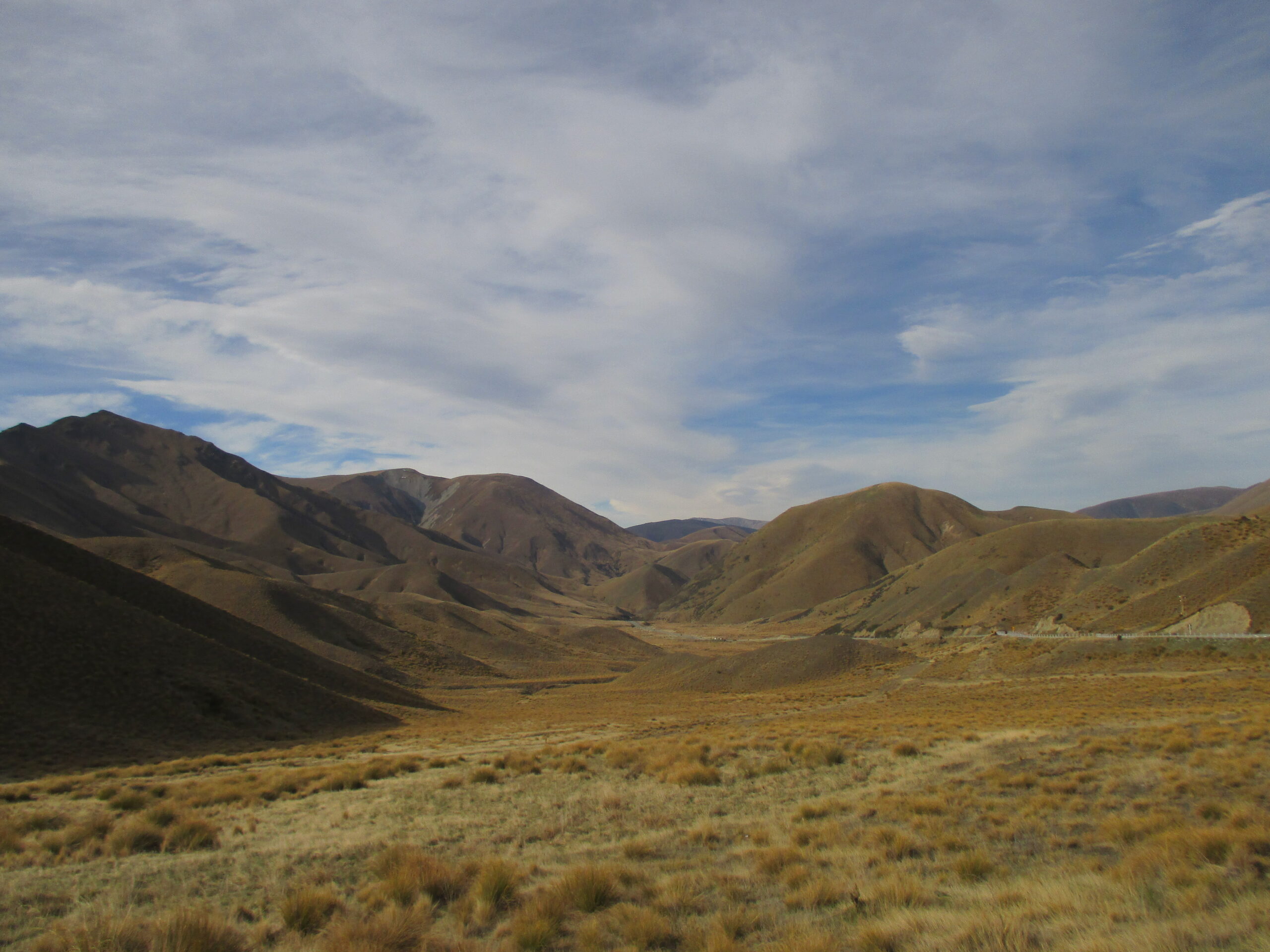Road trip: the South Island of New Zealand
Part five
Southwestern New Zealand is a region mostly untouched by humans. It is a rugged, dramatic myriad of mountains, valleys, and fjords. Many of the fjords are only accessible via tough hikes, or inaccessible via land, and can only be accessed by sea. The area is so vast, with a diverse terrain, that there are endless possibilities for exploration in the spectacular wilderness here. I can give you but a taster of what you could find here.
Te Anau, on the lake, is the starting point for ventures into the Fiordlands. And a favourite with tourists is Milford Sound. The route there is a worthwhile journey in itself. Being here, it is easy to understand why Peter Jackson decided to make Lord of the Rings in his native country and, indeed, some of the filming locations can be seen here.
The road starts on flatter land, and I approached the steep peaks from a distance. But it wasn’t long before they appeared directly above me. A worthy stop off on way to Milford Sound is Mirror Lakes. These lakes – as the name suggest, at least on a clear day – reflect the scenery beyond; fields of long grass, slopes packed with dense woodland, below craggy, snow-tipped summits.
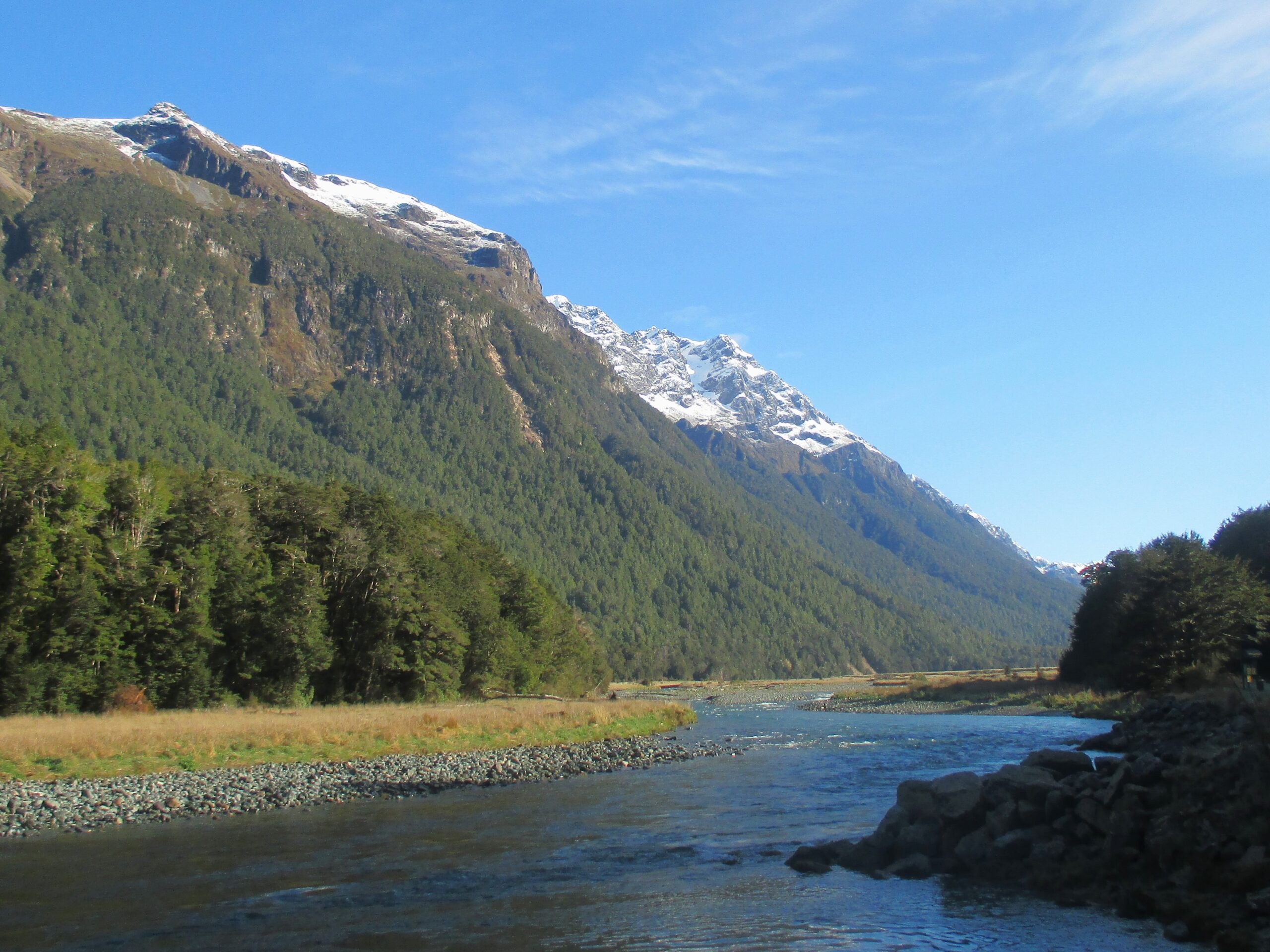
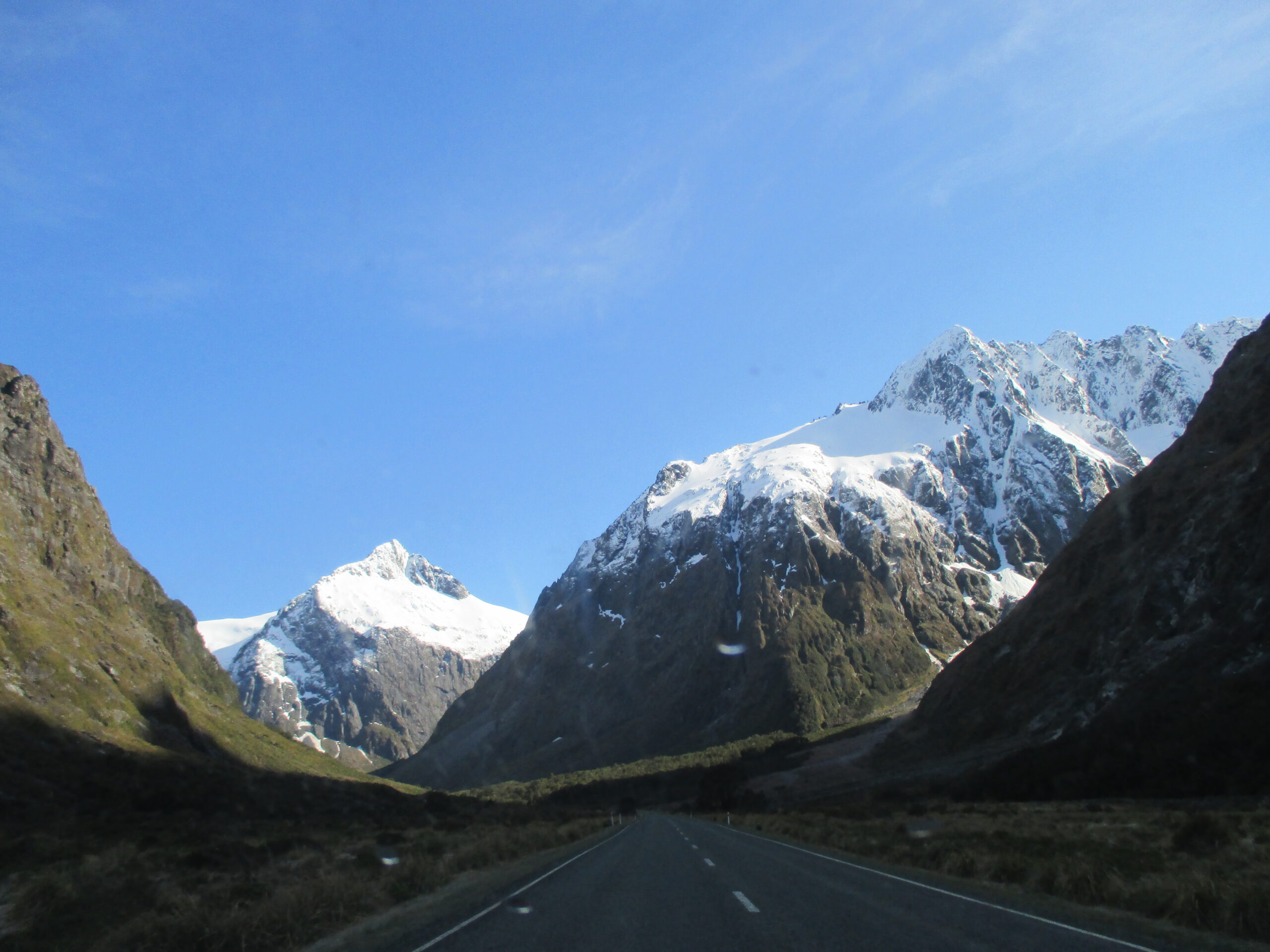

Beware that the conditions in this region can change quickly, and there is certainly no guarantee of good weather or clear skies, so visibility can be reduced significantly. As it happens, my first visit to Milford Sound almost exactly a year earlier had been during wet weather. Although I found it impressive, I felt at the time I hadn’t had the full experience, and I had hoped to visit again. And here I was.
Fortunately, my second trip to Milford Sound was on a bright, sunny day with uninterrupted views, justifying the decision to return. A variety of aquatic trips are available, including a kayaking expedition. A 90-minute boat trip is a great wait to explore the fjord (incorrectly titled as a ‘sound’), to the edge of the Tasman Sea and back. You will come close to the steep slopes on all sides, fully appreciating the sheer scale of the landscape.
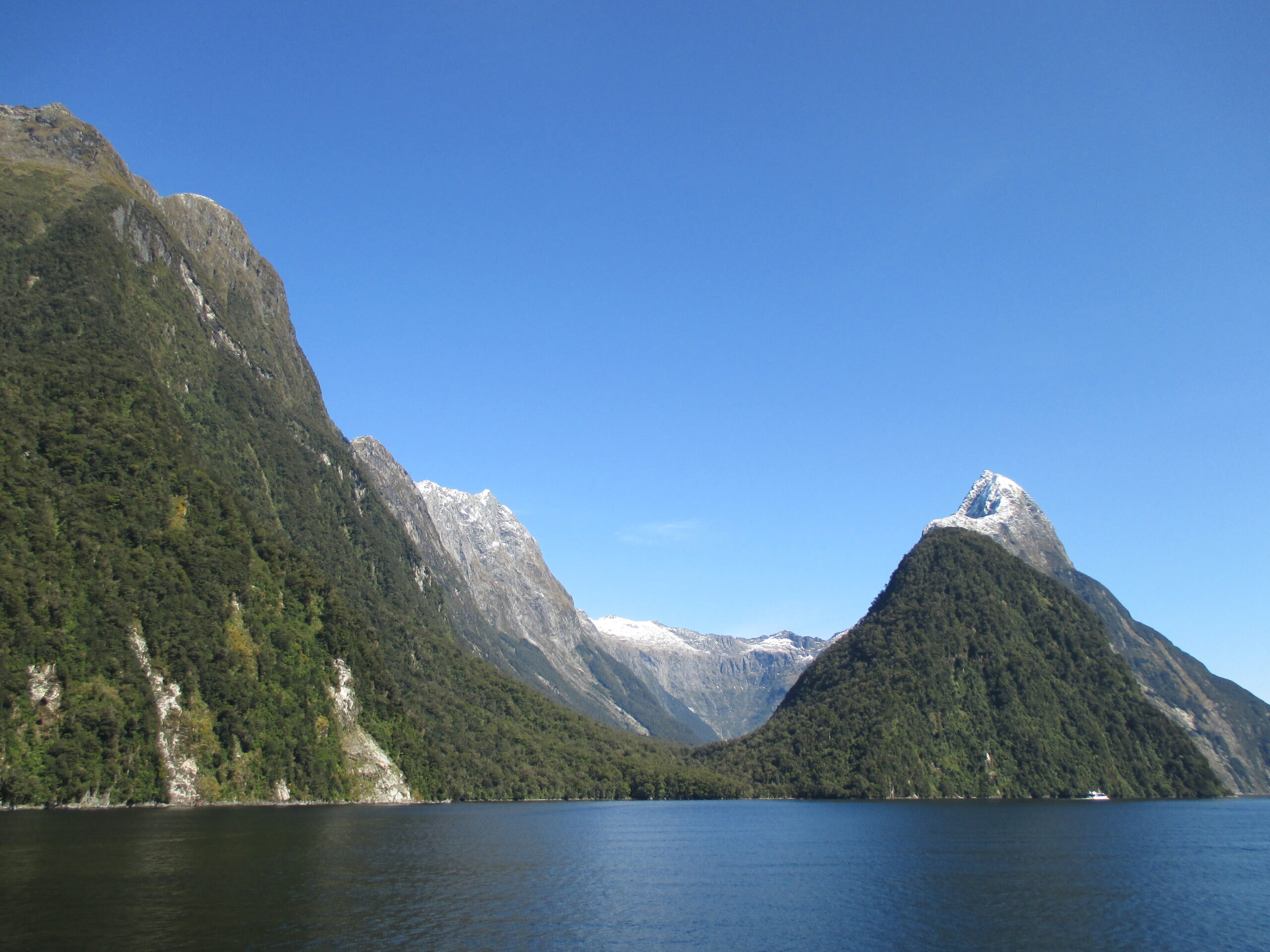
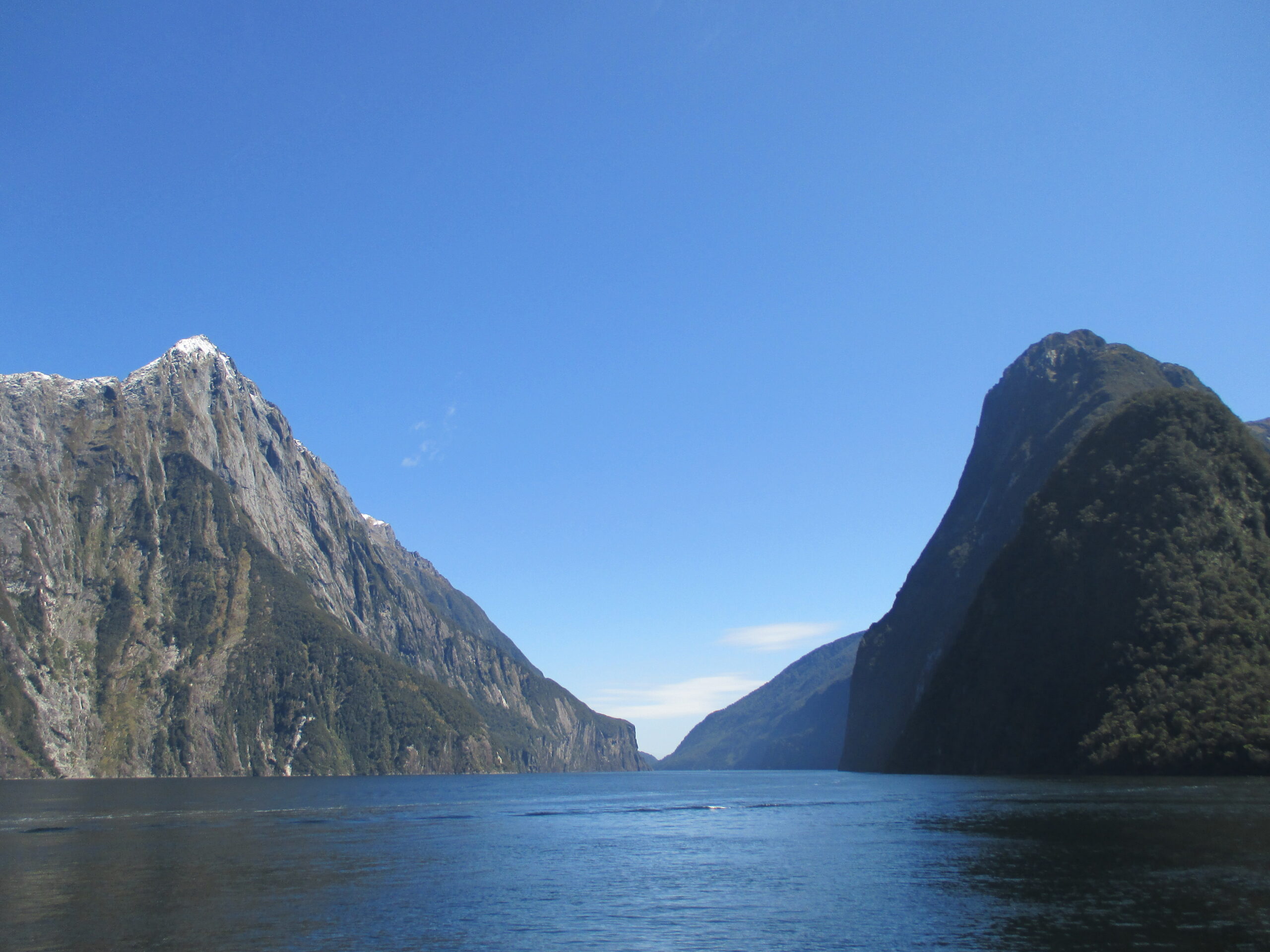
If you have a cheeky captain, as we did, they may take you extremely close to one of the waterfalls. If you realise what is about to happen quickly enough, you can seek shelter inside, as standing out on desk risks being soaked by the spray of the waterfall.
If you are very lucky you might see, as we did, dolphins swimming in the water. The sea was calm, making it easier to spot them. And these ones came playfully to the side of the boat. Other wildlife to spot includes seals (they seem to get around the entirety of the island), penguins, whales, and birds such as parrots.


It is a long, but enjoyable, four-hour drive from Milford Sound to the busiest population centre, Queenstown. It is packed during its popular ski season and, although it is quieter in summer, it’s a convenient base to explore – especially if you don’t have your own transport. It also has a selection of cafes, restaurants, and takeaways, as well as a public pool for a shower and a swim.
Nearby, along the shores of the same Lake Wakatipu that borders Queenstown, is Glenorchy – and the start of the famous Routeburn Track. If you are relatively fit, and you have two or three days to spare, I strongly recommend this hike to leap into the stunning scenery.

There are plenty of other nice hikes around, both shorter and longer. Having experienced the Routeburn Track, though, it isn’t hard to understand why it has become so popular – this popularity means you may need to book ahead to ensure you have the permit to do it.
You can read my account of the hike here, and you will learn why I was broken for most of the following day. I could only be a passenger in the car the next day, because I was incapacitated from dehydration and heat stroke. Fortunately, having someone else to drive – for which I am very grateful – meant the day wasn’t a write-off.
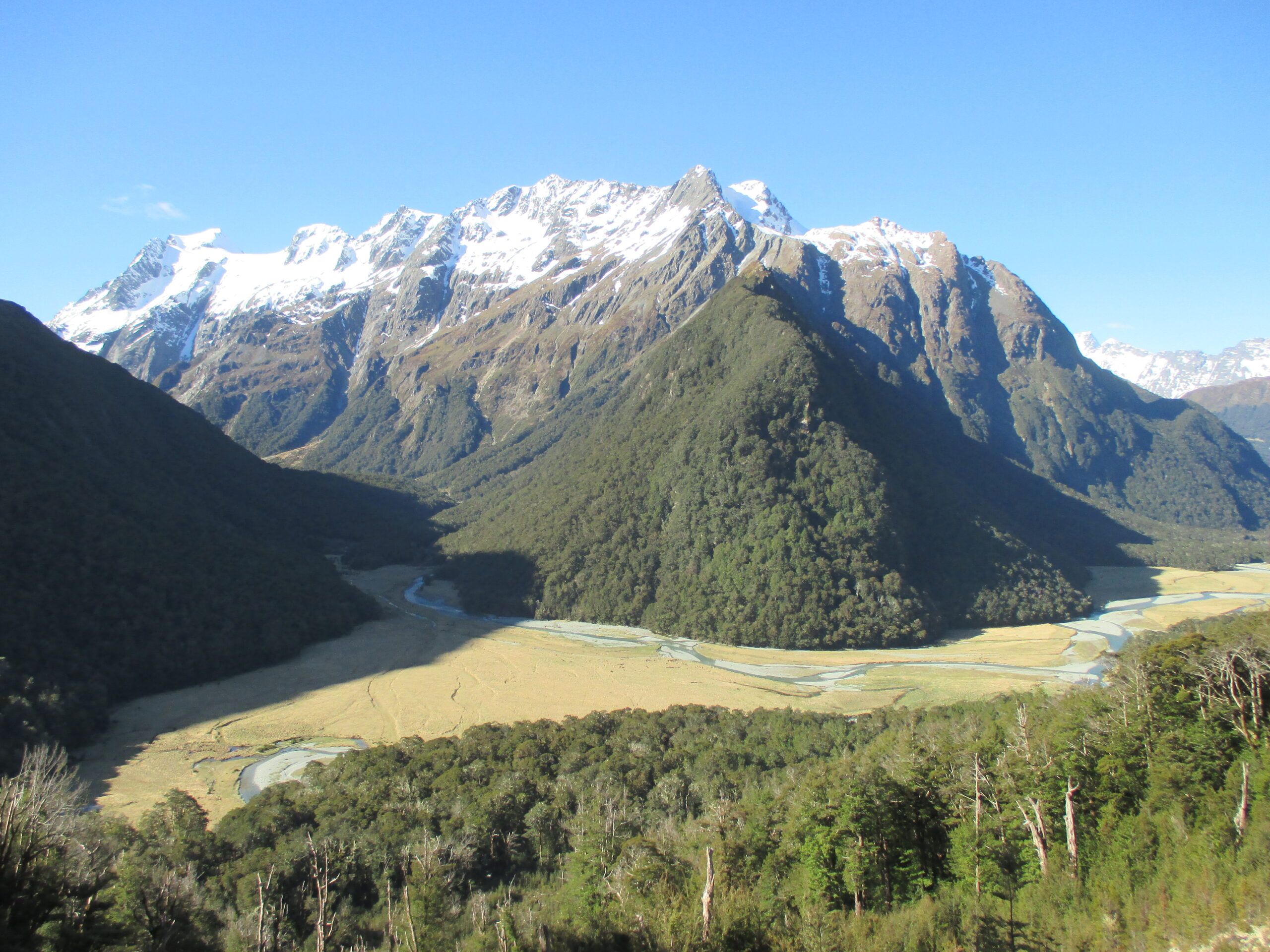

It was a three-and-a-half-hour drive back to the foot of Mount Cook/Aoraki. It was a clear day on this second visit, and from the base of the mountain, the extraordinary size was clear. I could barely muster the energy to stand up at that point, but I could still appreciate the scale of it.
At 3,724 metres high, Aoraki was the largest peak I had seen in my life at that point, by some distance. It is huge. The snow up there looked very deep, threatening to be a treacherous hike up, if you are brave enough to attempt it in Spring.

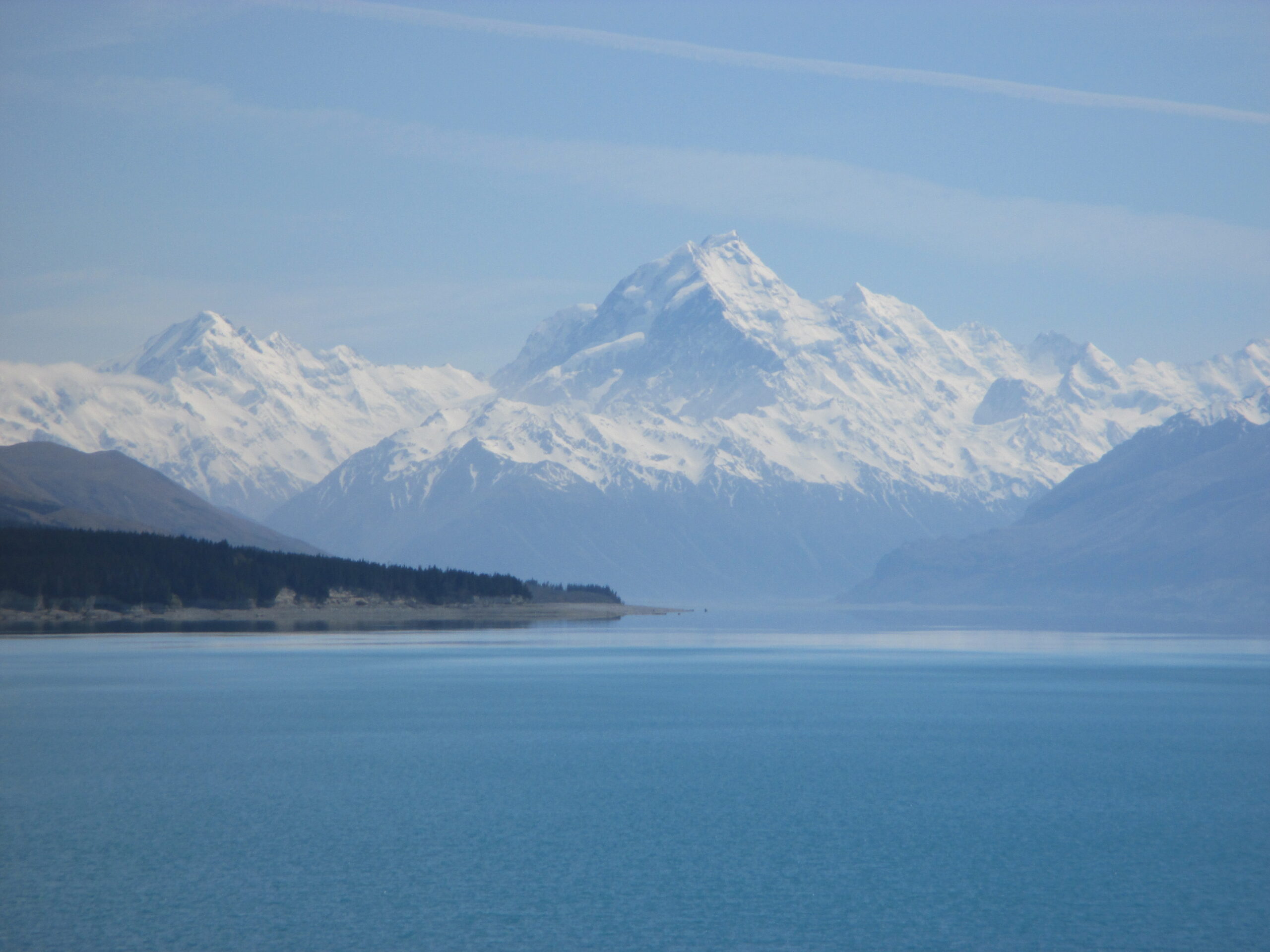

I started to feel more human on the drive back through Lindis Pass to Wanaka (if you look on the map, you will see driving up to Aoraki required a complete u-turn, but it was worth it). The scenery around Wanaka changes again. It is appearance near the end of Spring was similar to a desert. The hills were a mix of lighter browns, almost barren-looking.
Despite the smoother and gradual hills in this region, it was no less spectacular. It was enthralling to drive up, over, and down these hills and valleys, which provided great views of the surroundings. Traffic was light, and I loved the feeling of driving through this desolate landscape, with no else around. It was yet another cruise across an endless display of dramatic scenery on the South Island of New Zealand.
